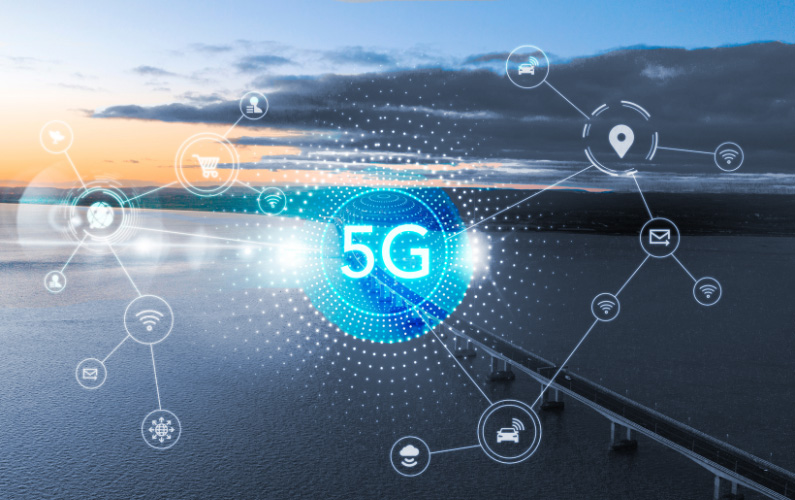Introduction
5G is here, promising blazing-fast speeds and transformative experiences. But what if your 5G experience has been far from exhilarating? If sluggish speeds are marring your mobile joy, don’t despair. We’ll explore a comprehensive guide to diagnosing and resolving slow 5G. By understanding the underlying factors and applying practical solutions, you can reclaim the promised 5G supremacy.

Image: commetric.com
Root Causes of Sluggish 5G
Firstly, let’s delve into the common culprits behind 5G lethargy. Understanding these factors will equip you with the knowledge to pinpoint the cause of your slow connection.
- Network Congestion: 5G’s introduction has led to an influx of users, putting immense pressure on network infrastructure. Congestion can occur during peak usage hours, resulting in reduced speeds.
- Coverage Issues: Network coverage plays a vital role in 5G performance. Obstacles like buildings, foliage, and terrain can obstruct signals, causing weakened connections and slower speeds.
- Device Compatibility: Not all devices are created equal in terms of 5G compatibility. Ensure your device is compatible with the 5G network you’re trying to access. Incompatibility can lead to poor performance and sluggish speeds.
- Software Updates: Outdated software on your device can compromise your 5G connection. Regular software updates include optimizations and bug fixes that can significantly improve performance.
- Inferior Signal Strength: Weak signal strength can be a major bottleneck for 5G speeds. Factors like distance from cell towers, interference from other devices, and building materials can impact signal strength.
Troubleshooting and Resolution
Now that we’ve identified the potential causes of slow 5G, let’s embark on practical solutions to restore your lightning-fast internet prowess.
- Monitor Your Network: Keep an eye on your network connection using speed test apps or the network indicator on your device. This will help you gauge the performance and identify any significant changes.
- Check Coverage: Determine if you’re within an area with adequate 5G coverage. Consult network providers’ coverage maps and consider using signal boosters or extenders to enhance signal reception.
- Update Device Software: Regularly check for software updates on your device. Installing the latest software ensures compatibility and enhances overall performance, including 5G connectivity.
- Restart Your Device: Sometimes, a simple restart can resolve connectivity issues. This refreshes network connections and eliminates any temporary glitches that may be affecting performance.
- Reposition Your Device: Signal strength varies depending on your location. Try repositioning your device to a spot with stronger reception, such as near a window or on a higher floor.
- Minimize Interference: Remove any barriers or sources of interference that may be obstructing signal reception. Move away from electronic devices, unplug unnecessary appliances, and consider using noise-canceling headphones.
- Contact Your Provider: If all else fails, reach out to your network provider. They can conduct thorough tests, identify the root cause of your slow 5G, and provide tailored solutions.

Image: community.o2.co.uk
How To Fix Slow 5g
Conclusion
Addressing slow 5G requires a systematic approach that involves understanding the underlying causes and implementing practical solutions. By following the troubleshooting tips outlined in this guide, you can diagnose and resolve 5G connectivity issues, unlocking the full potential of this transformative technology. Remember to monitor your network, stay updated on software, prioritize strong signal strength, and reach out to your provider for assistance if necessary. With these steps, you can reclaim the blistering speeds and exceptional experiences that 5G was promised to deliver.